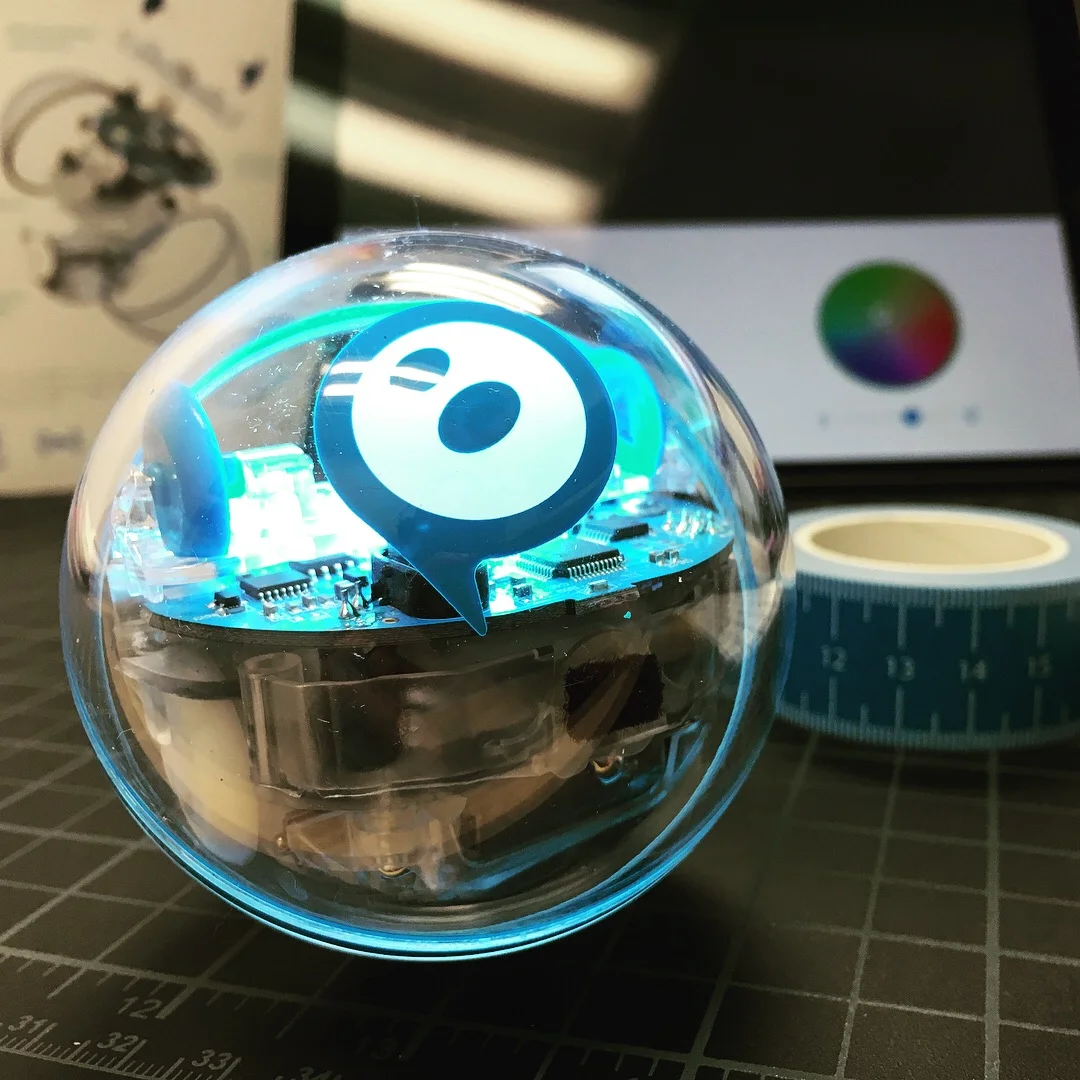Bleep! Bloop-bleep! The electronic sound of robotic language is not only captivating, it can be downright inspiring. Looking a little closer, the actual written language (JavaScript) for the charming little beeps reveals a peak into the power of programmable robots.
async function startProgram() { await Sound.Effects.BeepSingle.play(true); await Sound.Effects.BeepDouble.play(false);}
I consider this post to be somewhat of a cross-post with an article I recently published for the #OofSI blog. So let me paraphrase my original article here.
In early November I developed a series (3 to be exact) of mini-technology workshops as part of a workshop series for the Coronado School District in Scottsdale AZ. The workshop consisted of the following technology-centered stations: programmables (robots), digital storytelling, and mobile computing, I wanted to share in more detail the programmables component, because this is the one that included the use of some pretty fun little robots.
Often there seems to be a perception that programmable robots are specifically for "coders" or faculty/students interested solely in computer science, the reality however is that they tend to be very approachable and easy to work with for novice coders and beginners thanks to the great user interfaces developed for the robots.
So what are programmables?
Programmables are a generic term for a category of code-enabled toy robots. For our workshop, we used the Sphero SPRK+ (pronounced “spark”) which is a small clear robotic orb that contains a sophisticated array of gyroscopes, accelerometers, sensors, motors, and lights. The SPRK+ is controlled via Bluetooth connection to an app enabled smartphone or tablet (iOS and Android). The SPRK+ is just one of many examples of programmables. Some others are: Littlebits, OzoBots, and even LEGO Mindstorm / Boost.
The Sphero SPRK+ is a really accessible robot, and is easily controlled by an app running on iOS or Android mobile devices. Additionally, the team at Sphero have gone above and beyond and developed several apps that you can use for control. The SpheroEDU app is the one I used while developing the workshop, as this app allows you to have access to three programming modes (which I'll touch on in a minute) in addition to a free-drive mode. Sphero has a "fun" or game like app that allows you to explore the robot as a toy with game like features and challenges that encourage you to gain control over your robot.
Looking at the SpheroEDU app - as I mentioned previously it has three programming modes that you can use depending on skill level and exploration. The three modes are defined as drawing, blocks, and text.
The various programming methods allow for varying levels of programming experience and development with the device. Drawing allows a user to draw a “path” on their smartphone grid for the robot to follow. The blocks option (the most powerful visual method for intermediate coders) allows users to program the SPRK+ by dragging visual blocks of code into the program allowing them to reorder, provide attributes and other options to each block of code to create a unique program they can execute on the robot. The most advanced method of control (meant for serious coders) is to control the robot purely through JavaScript.
Using Programmables to Infuse Technology in the Classroom
Whether you are teaching k-12 or higher ed, the use of programmables can be an exciting way to infuse technology into the curriculum and provide a new platform or medium of expression through which students can demonstrate their understanding of core curricular competencies. Due to the variety of skill levels, and access points to these devices they have a large variety of implementation paths.
One of the main aims of the workshop was to challenge the teachers to think how they might use this technology in the classroom to promote critical thinking, computational thinking, storytelling, and meaningful play. It is a given that these tools can be used to teach programming, but the true value of programmables such as this is the ability to be used in transdisciplinary methods that incorporate STEAM activities. A question to leave with, is how would you use this device (or one similar) to create art? Tell a story? Or demonstrate a complex concept such as planetary motion?
Overall the workshop attendees were thrilled to get their hands on these flashy and fun robots and discover the potential of how these deceives could be used across many areas of study. My office will be continuing to develop hands-on workshops in the future as well as build these devices into new Emerging Technology Labs that will be operational on the ASU Campuses this coming spring.




